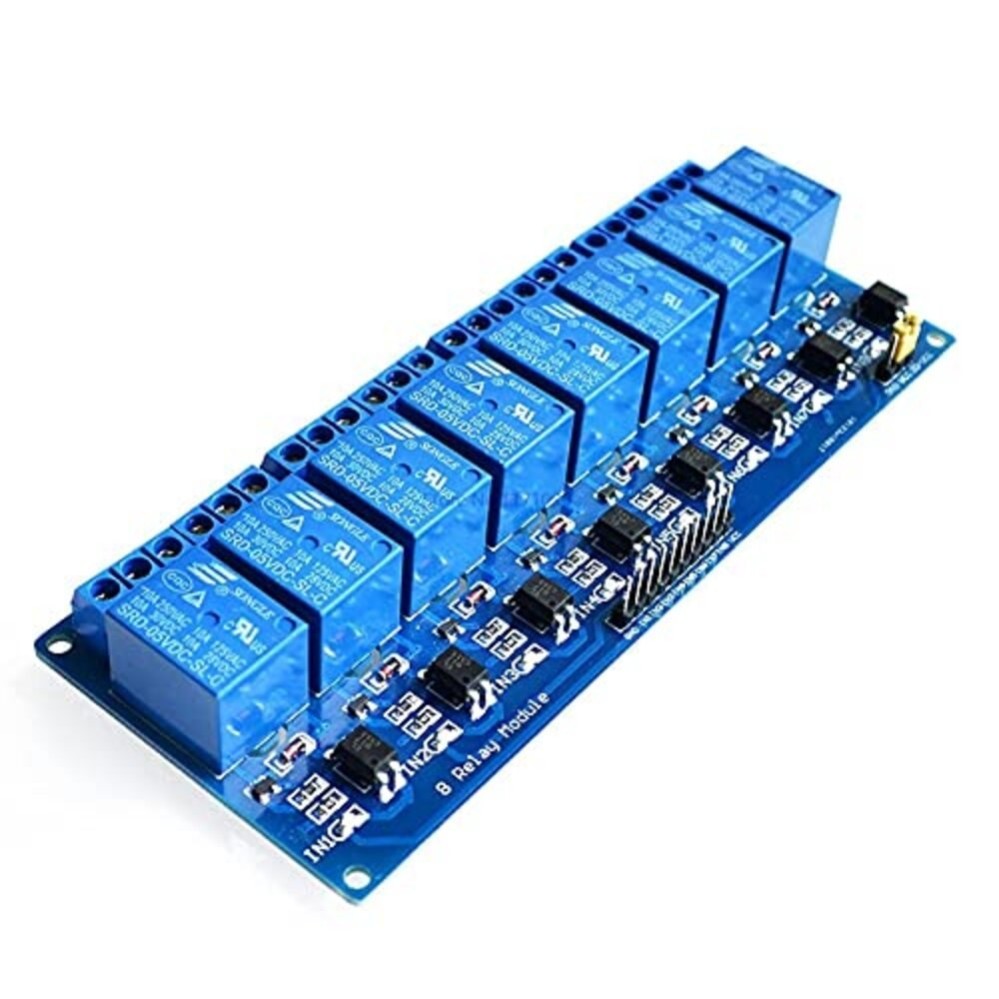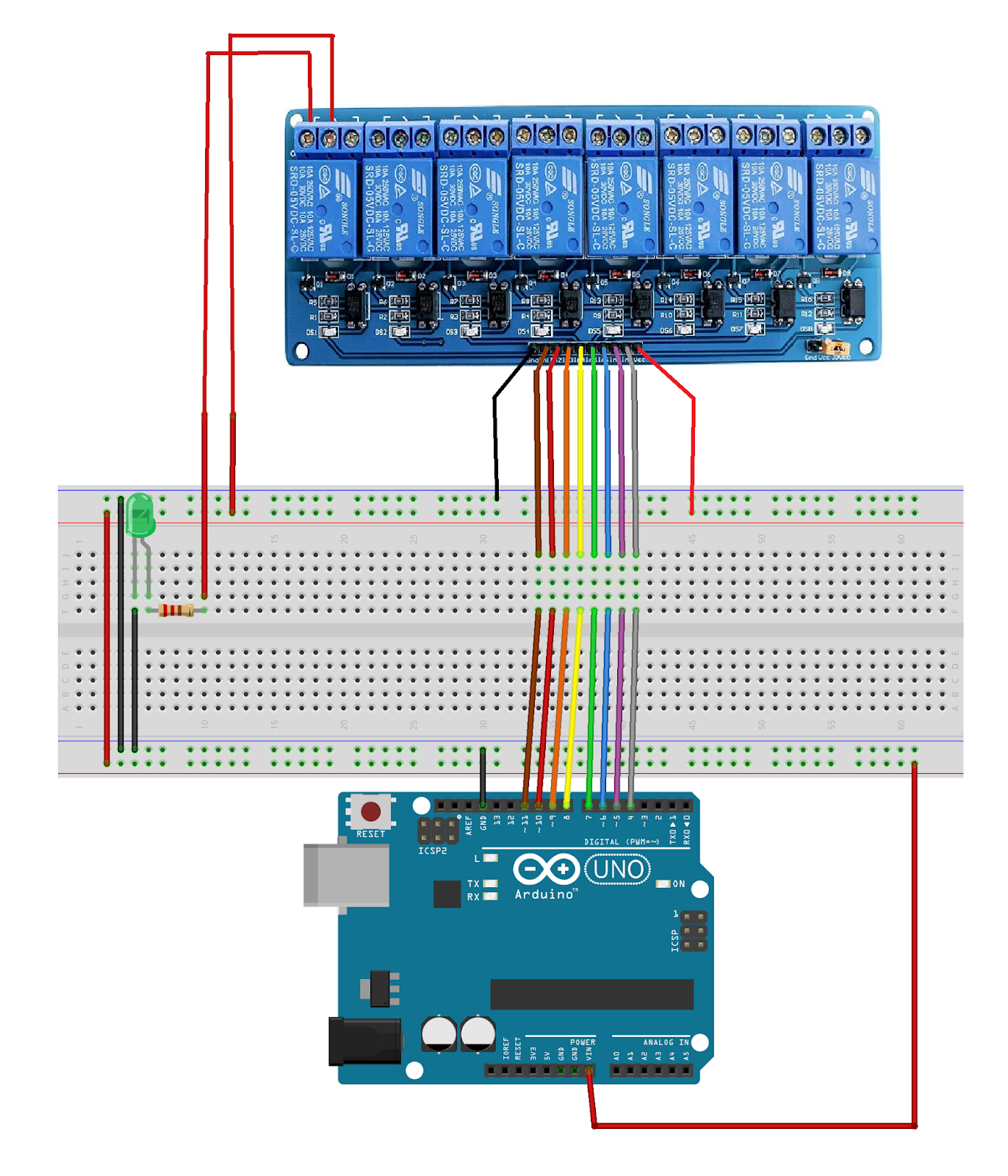





5V 8 CH RELAY MODULE
8 Channel Relay Board 12V - This is a 12V 8-Channel Relay interface board, Be able to control various appliances and other equipment with large current. It can be controlled directly by Micro-controller (Arduino, 8051, AVR, PIC, DSP, ARM, MSP430, TTL logic).
₹ 248 ₹399
399
Add FAQ
A 12V 8-Channel Relay Module is an advanced version of relay modules designed to control multiple high-power devices or systems with a single low-voltage control signal. This module is commonly used in automation, home control systems, and industrial applications due to its ability to handle multiple channels simultaneously.
Key Features:
-
Number of Channels:
- 8 Channels: Allows for control of up to eight independent devices or systems.
-
Operating Voltage:
- 12V DC: The relay module operates from a 12V power supply, which powers the relay coils.
-
Relay Type:
- Electromechanical Relays: Uses electromechanical relays to switch high-voltage AC or DC loads.
-
Relay Ratings:
- AC Load: Typically rated for 250V AC at 10A.
- DC Load: Typically rated for 30V DC at 10A.
- Note: Always verify the specific ratings from the relay's datasheet for accurate details.
-
Control Signal:
- 5V TTL Compatible: The relay module is controlled using a 5V TTL (Transistor-Transistor Logic) signal from a microcontroller such as Arduino, Raspberry Pi, or similar.
-
Isolation:
- Optical Isolation: Features optocouplers to provide electrical isolation between the low-voltage control side and the high-voltage load side. This protects the control circuitry from high-voltage spikes and provides safety.
-
Indicator LEDs:
- LED Indicators: Each relay channel typically has an onboard LED that lights up when the corresponding relay is activated. This provides visual feedback on the relay's status.
-
Relay Pins:
- VCC: Power supply pin (12V DC) for energizing the relay coils.
- GND: Ground pin for the relay module.
- IN1 to IN8: Control pins for each of the eight relays. These pins receive 5V TTL signals to activate the relays.
- NO (Normally Open): Relay contact that closes when the relay is activated.
- NC (Normally Closed): Relay contact that opens when the relay is activated.
- COM (Common): Common terminal for each relay.
Applications:
- Home Automation: Control multiple household appliances such as lights, fans, and other devices from a central control system.
- Industrial Control: Switch on or off multiple industrial equipment or machinery.
- Power Management: Manage power to several devices in experimental setups or prototypes.
- Automated Systems: Integrate into systems that require switching between different operational states.
Example Connection with Arduino:
To connect and control a 12V 8-Channel Relay Module with an Arduino, follow these steps:
Wiring Instructions:
-
Relay Module to Arduino:
- VCC (Relay Module) to 5V (Arduino) (Note: Some modules may require a separate 12V power supply for the relay coils, so check the module’s specifications).
- GND (Relay Module) to GND (Arduino).
- IN1 to IN8 (Relay Control Pins) to Digital Pins 2 to 9 (Arduino) (one pin per relay channel).
-
Load Connection:
- NO (Relay) to one terminal of the load.
- COM (Relay) to the power source (AC or DC).
- Other terminal of the load to the ground or neutral of the power supply.
- Repeat for each relay channel as needed.

0 Reviews For this Product





.jpg&width=225&quality=80)

.jpg&width=225&quality=80)








